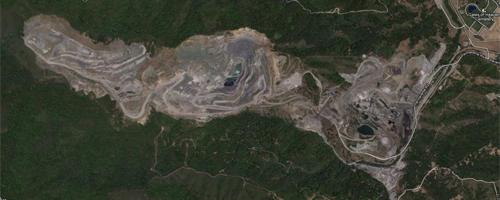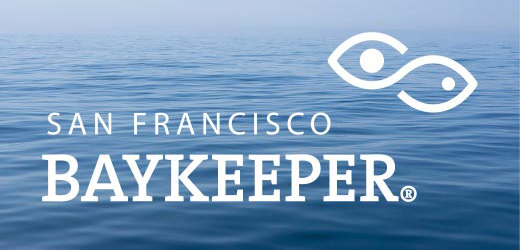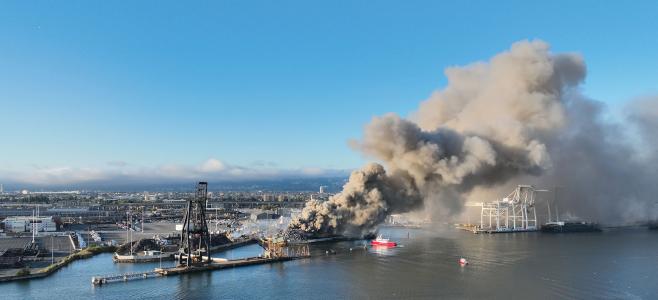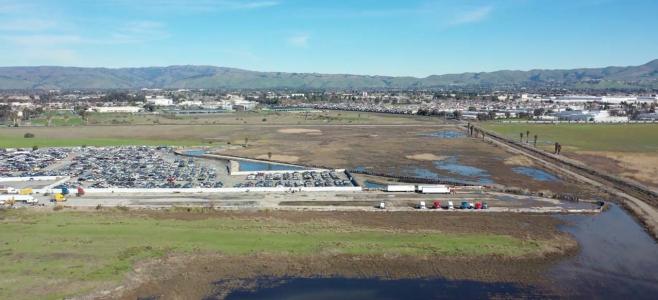
A Cupertino limestone quarry’s plan for how they would end mining operations could pollute San Francisco Bay with mercury and other metals, Baykeeper recently warned Santa Clara County planners. Lehigh Southwest Cement Company is required by law to have a plan for eventually filling its quarry and making the land suitable for future open space—but the company’s plan isn’t specific enough, and it does not include adequate protections against toxic contamination of the Bay and local creeks.
Reclaiming the Lehigh limestone quarry would be no small feat. The quarry makes up almost a third of Lehigh’s entire 3,500-acre site and has been in operation for more than 100 years. Limestone contains mercury, and the Lehigh facility is the Bay Area’s largest single source of mercury pollution.
Yet the proposed reclamation plan would not preclude future mining within the quarry (despite this supposedly being a plan for closing the quarry) or the possibility of mining in other sections of Lehigh’s property.
Baykeeper urged the Santa Clara County Department of Planning and Development to strengthen the draft environmental impact report for the Lehigh Permanente Quarry Reclamation Plan, in order to address several flaws in the company’s plan.
First, the report doesn’t fully analyze all the environmental impacts of the reclamation plan, or adequately describe the reclamation activities.
The report also does not discuss the full scope and time frame for future mining, and it fails to provide any justification for why Lehigh supposedly has a vested right to mine the entire area.
Furthermore, the report only considers impacts to Permanente Creek, which runs through the Lehigh property. It ignores the potential for contaminating nearby Stevens Creek and San Francisco Bay.
Finally, the report does not address all feasible options for mitigating the project’s environmental impacts and does not provide a full discussion of the project’s cumulative impacts.
Lehigh emits approximately 435 pounds of mercury per year into the air through its smokestacks. Much of the pollution falls into the Bay or gets washed into waterways leading to the Bay by rain. Mine reclamation activities could cause contamination if mercury-containing materials are used to cover the mines at the quarry.
Mercury is a toxic heavy metal. Waterborne bacteria often convert mercury to a more toxic form called methylmercury—a potent neurotoxin that remains in the environment and builds up in the food chain. When people and wildlife eat fish contaminated with methylmercury, it can cause neurological, developmental, immunological, reproductive and cardiovascular problems.
Baykeeper will continue to watchdog this dangerous source of mercury pollution in the Bay and local waterways.
Map Data © 2012 Google, Imagery © 2012 AMBAG, DigitalGlobe, GeoEye, U.S. Geological Survey, USDA Farm Service Agency,


